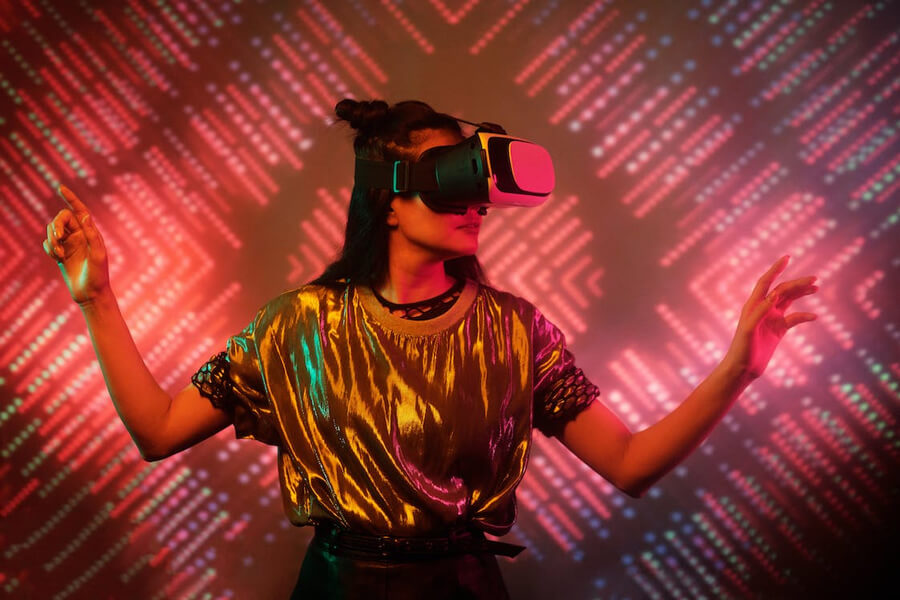AI, VR, and Beyond: Shaping the Future of Interactive Online Gaming

In the ever-evolving landscape of online gaming, the convergence of Artificial Intelligence (AI) and Virtual Reality (VR) is ushering in a new era of immersive and interactive experiences, even for roulette demo. As technology continues to advance, players are stepping into a realm where the boundaries between reality and virtual worlds blur, creating a gaming experience that goes beyond traditional norms. This article explores the transformative impact of AI, VR, and other emerging technologies on the future of interactive online gaming.
Artificial Intelligence: A Game-Changer in Gameplay
AI is emerging as a formidable force in the realm of online gaming, transforming the way players engage with their favorite titles. From dynamic non-player characters (NPCs) that adapt to player behavior to intelligent opponents that learn and evolve over time, AI injects a new level of unpredictability and challenge into gaming experiences.
One notable application of AI is in procedural content generation, where algorithms create dynamic and ever-changing game environments. This ensures that no two gaming sessions are alike, offering players a fresh and unpredictable adventure each time they log in. Whether exploring vast virtual landscapes or engaging in strategic battles, AI-driven content generation brings an element of surprise and excitement to the gaming world.
Furthermore, AI is playing a crucial role in enhancing player personalization. By analyzing player preferences, behavior, and skill levels, AI algorithms can tailor in-game experiences, providing personalized challenges, rewards, and narratives. This not only enhances player engagement but also creates a more immersive and enjoyable gaming journey.
Virtual Reality: Bridging the Gap Between Reality and Gaming
Virtual Reality has been a game-changer in the quest for immersive gaming experiences. By transporting players into meticulously crafted virtual worlds, VR eliminates the boundaries of traditional gaming, offering a sense of presence and interaction like never before. Whether exploring fantastical realms, participating in adrenaline-pumping simulations, or engaging in social experiences, VR has opened up new frontiers for online gaming.
The rise of VR in online gaming is not just about visual immersion but extends to interactive and tactile feedback. VR controllers, haptic feedback devices, and motion sensors enable players to physically engage with the virtual environment, enhancing the sense of presence and realism. From wielding virtual weapons to navigating through complex environments, players are no longer passive observers but active participants in the gaming narrative.
Moreover, VR is fostering social interactions in online gaming. Virtual spaces where players can meet, communicate, and collaborate are becoming increasingly common. Whether teaming up for cooperative missions or competing in virtual sports, VR is creating a sense of camaraderie and social connection in the gaming community.
The Synergy of AI and VR: Elevating Gaming Experiences
The combination of AI and VR is proving to be a formidable synergy that elevates gaming experiences to new heights. AI-driven NPCs in VR environments can exhibit more sophisticated and human-like behaviors, responding dynamically to player actions and choices. This not only enhances the challenge but also contributes to a more immersive and lifelike virtual world.
Moreover, artificial intelligence is employed to improve the graphics and streamline the performance of virtual reality. Machine learning algorithms can adapt visual components in real-time according to the hardware capabilities of the player, ensuring a more seamless and visually impressive virtual reality encounter. This not only tackles hardware constraints but also broadens the accessibility of virtual reality gaming to a larger audience.
Beyond the Horizon: The Future of Interactive Online Gaming
As we stand at the crossroads of AI, VR, and other emerging technologies, the future of interactive online gaming holds limitless possibilities. Innovations such as Augmented Reality (AR), cloud gaming, and neurogaming are on the horizon, promising to reshape the gaming landscape even further.
AR, for instance, introduces virtual elements into the real-world environment, blending the boundaries between physical and virtual spaces. This opens up opportunities for location-based gaming experiences, where players can interact with virtual elements overlaid on their real surroundings. From urban explorations to educational adventures, AR adds a layer of interactivity to everyday life.
Cloud gaming, on the other hand, allows players to stream games directly from the cloud, eliminating the need for high-end hardware. This accessibility democratizes gaming, making high-quality gaming experiences available to a broader audience. Players can enjoy graphics-intensive games on a variety of devices, from smartphones to low-spec computers, fostering inclusivity in the gaming community.
Neurogaming, a field that explores the interaction between gaming and brain-computer interfaces, introduces a new dimension to player engagement. By translating neural signals into in-game actions, players can control characters, navigate environments, or even communicate with other players using their thoughts. This revolutionary approach has the potential to redefine the very nature of player input and interaction in gaming.
🔙 Back to Articles list.